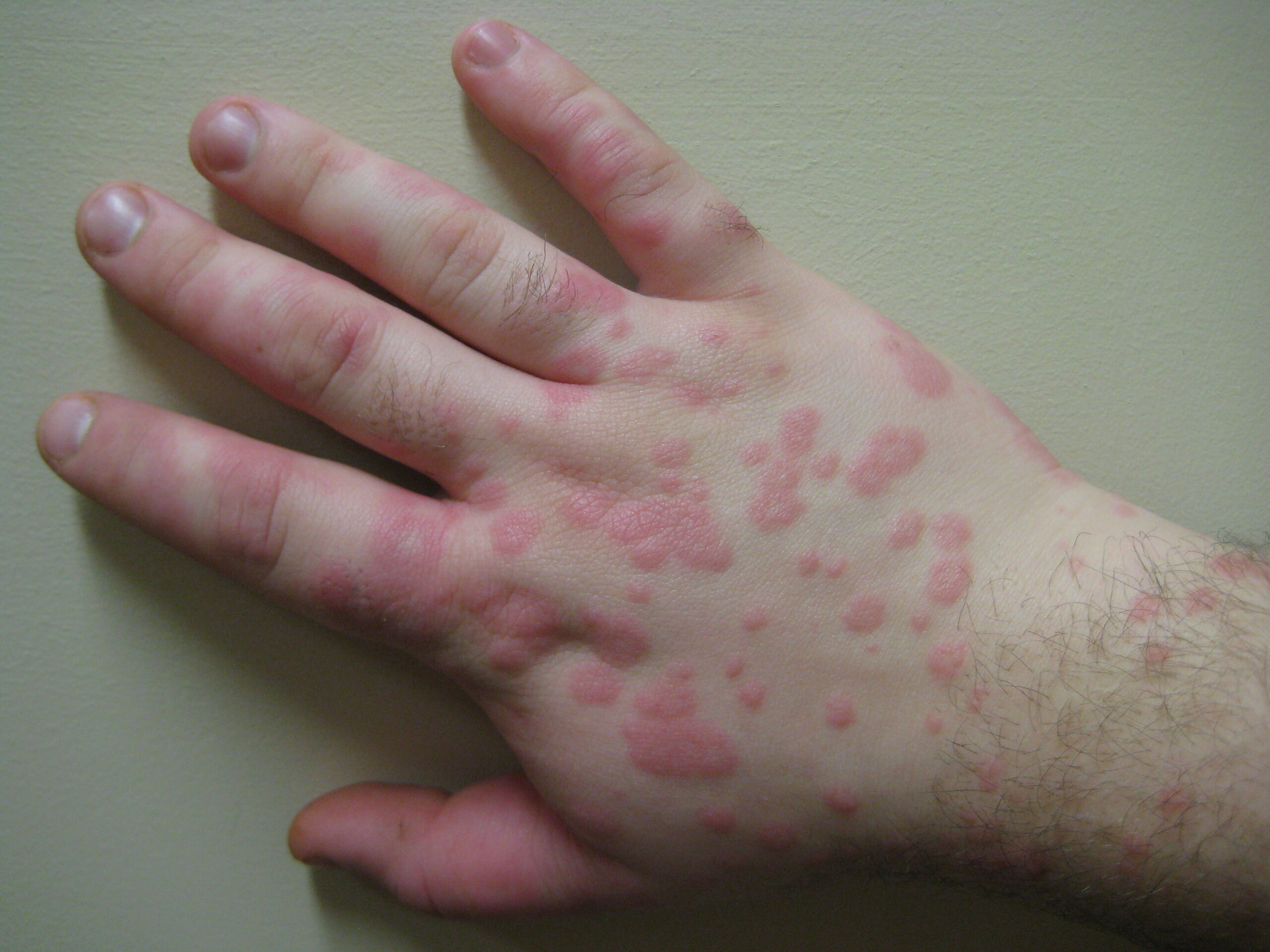Erythema Multiforme: Symptoms, Causes, Treatment
What are the symptoms of erythema multiforme?
Erythema multiforme (EM) is a skin condition that can cause a range of symptoms, which can vary from mild to severe. The main symptom of EM is the presence of skin lesions that typically have a distinctive appearance. These lesions can vary in size and shape and often have a target or “bull’s eye” appearance, with a red center surrounded by a pale ring and then a red outer ring.
Other symptoms of EM can include:
- Itching: The lesions may be accompanied by itching or burning sensations.
- Pain: In some cases, the lesions can be painful, especially if they occur in the mouth or genital area.
- Fever: Some people with EM may develop a fever, especially if the condition is caused by an infection.
- Malaise: A general feeling of being unwell or malaise can accompany EM, especially in more severe cases.
- Joint pain: Some people with EM may experience joint pain, similar to that seen in arthritis.
EM can be triggered by various factors, including infections (particularly herpes simplex virus and mycoplasma infections), medications (such as antibiotics and anticonvulsants), and other underlying conditions. The severity of symptoms can vary depending on the cause and the individual’s overall health.
It’s important to see a healthcare provider for a proper diagnosis if you suspect you have EM or are experiencing any of these symptoms.
What are the causes of erythema multiforme?
Erythema multiforme (EM) is thought to be a type of hypersensitivity reaction, but the exact cause is not always clear. It is believed that EM can be triggered by various factors, including:
- Infections: EM can be triggered by infections, most commonly herpes simplex virus (HSV) and mycoplasma pneumoniae. Other infections, such as cytomegalovirus (CMV), Epstein-Barr virus (EBV), and influenza, have also been associated with EM.
- Medications: Certain medications can trigger EM in some people. Common culprits include antibiotics (such as penicillins, sulfonamides, and cephalosporins), anticonvulsants (such as phenytoin and carbamazepine), and nonsteroidal anti-inflammatory drugs (NSAIDs).
- Other factors: Other factors that have been linked to EM include exposure to certain chemicals, such as those found in some foods, cosmetics, and medications, as well as physical factors like exposure to ultraviolet light.
In many cases, the exact trigger of EM cannot be identified. It is believed that some people may have a genetic predisposition to developing EM, which can make them more susceptible to developing the condition when exposed to certain triggers.
It’s important to note that EM is not contagious and cannot be spread from person to person. If you have EM or are experiencing symptoms of EM, it’s important to see a healthcare provider for a proper diagnosis and treatment.
What is the treatment for erythema multiforme?
The treatment for erythema multiforme (EM) depends on the underlying cause and the severity of the symptoms. In many cases, EM resolves on its own without specific treatment. However, treatment may be needed to relieve symptoms and prevent complications. Treatment options for EM may include:
- Identifying and treating the underlying cause: If EM is triggered by an infection, such as herpes simplex virus or mycoplasma pneumoniae, antiviral medications or antibiotics may be prescribed.
- Medications to relieve symptoms: Pain relievers, such as acetaminophen or ibuprofen, may be used to reduce pain and fever. Antihistamines may be prescribed to help relieve itching.
- Topical treatments: Calamine lotion or corticosteroid creams may be applied to the skin to help soothe the lesions and reduce inflammation.
- Severe cases: In severe cases of EM, especially those that involve mucous membranes or widespread skin involvement, corticosteroids or other immunosuppressive medications may be prescribed to reduce inflammation and suppress the immune response.
- Supportive care: In some cases, supportive care, such as rest, avoiding dehydration, and cool compresses, may be recommended to help relieve symptoms and promote healing.
It’s important to consult a healthcare provider for a proper diagnosis and treatment plan if you suspect you have EM or are experiencing symptoms of EM. Do not attempt to self-diagnose or self-treat, as this can lead to complications.




